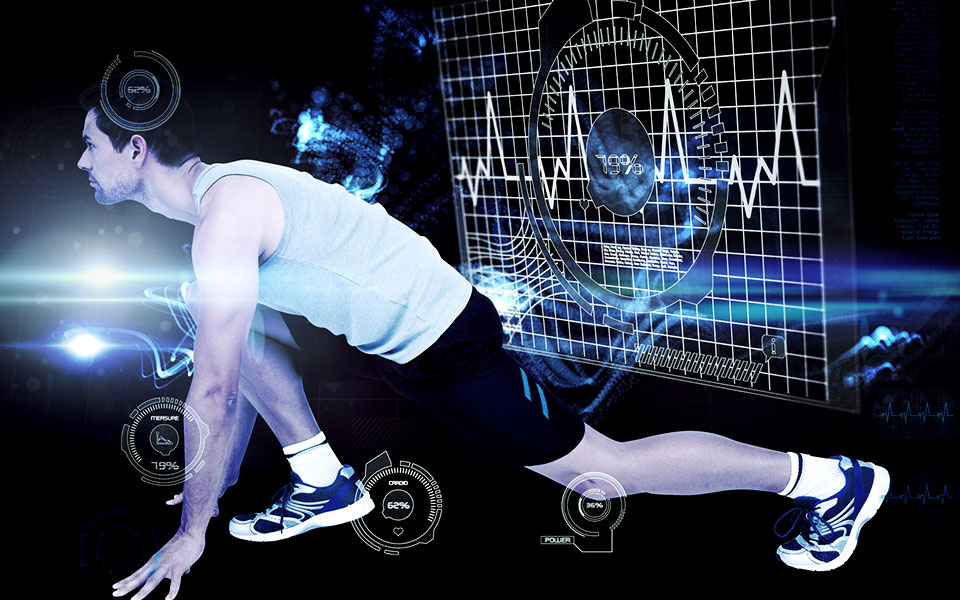When The Jakarta Post named Singapore the most well-prepared city for the future in Asia two years in a row, editors assessed social, infrastructural and commercial progress. So if you take pride in your homeland, feel free to wear this impressive citation as a badge of honour.
But beyond buildings and bridges, your world includes a sport that has become as essential a part of your life as is infrastructure to Singapore’s reputation for being a forward-leaning nation, so it’s only natural to speculate about the future of this nation’s running movement. Is it hard for you to imagine life in 2115? We can help—and we promise this: You’ll find no jet-propelled backpacks in this article guaranteed to elevate you into the air over other runners and get you to the finish line first!
2115 Will Be All About Data Collection
According to RunScribe, expect a paradigm shift in the next century in the area of data collection. Movement patterns and forces (known as kinematics and kinetics) are already hot research topics and scientists from Singapore to Sweden are particularly focused on pursuing the relationship between running and injury. Said University of Calgary scientist Reed Ferber when asked about the ultimate instrument for gathering data on this topic, “We need to tag our runners like wildlife biologists tag the wild animals they study.”
Weird? Wonderful? But suppose he’s right: that by tagging runners, injuries suffered by runners in the century ahead diminish dramatically based on this data collection? True, research can move at a snail’s pace when it comes to collecting and synthesising injury prevention data—but like RunScribers, we’re convinced that collaboration between everyone from shoe manufacturers to sports medicine researchers are the keys to solving all manner of runner health issues by 2115 and beyond.

2115 Could Continue The Great Gender-Divide Trend!
According to Runner’s World magazine, the future of road racing may well depend upon the fairer sex! Women have always been trendsetters, and these days, the number of women who take up running as compared to men is growing—and there’s no indication that the trend will reverse itself in the future.
Women are driving “ever-escalating race-finisher numbers,” says marathon organiser Don Kardong. His contemporary Sean Ryan says, “The marathon or half marathon has become the perfect antidote to the midlife crisis.” In other words, “staying young” continues to be among the most anxiety-producing worries for women throughout the world as evidenced by the thriving plastic surgery movement.
Besides cosmetic surgery, more women are adopting running as a way to maintain physical youth while men, according to Ryan and Kardong, are trading running for everything from pick-up basketball games to fantasy football. Kardong adds that one of the reasons extreme events have become so popular is because male runners seek more thrills, so by 2115, the sport of running may be dominated by women; good news for the fashion industry and for female event-only race organisers!
2115 Will Be All About Properly Fitted Shoes
The Arena Gait and Performance Laboratory, located at the University of South Australia, is focusing on the role athletic shoes play in a runner’s conditioning, performance and rate of injury in collaboration with athletic footwear giant ASICS. What will future running shoes have that they don’t have now? They’ll be amazingly intuitive, comfortable, performance-enhancing and even limit potential injuries, according to this UNISA press release.
Cutting-edge studies using 3D motion analyses that are captured on treadmills with “in-built force measurement capability” are already being used as part of the art and science of footwear development, but thanks to this collaboration, progress is expected to move at warp speed between now and 2115. Down the road, runners will take their new running shoes to a kinetics lab for a private analysis by a footwear expert as a regular activity. In other words, your grandchildren will use search engines to find the nearest Singapore biometrics laboratory!
2115 Technology Will Be The Stuff Of Science Fiction
When Gareth Beavis ran a recent marathon, his mind was whipped into a frenzy as he paced the circuit and thought about what the future holds for runners. His epiphanies include forecasting future gimmicks, devices and technology that turned his formerly no-frills running experiences into a dependency for such gadgets. These days, he can’t imagine running without all of them!
Smartwatches will be history, he speculates. GPS trackers? Likely confined to museums. His run through the streets of London brought to mind Sony SmartEyeglass and Google glass technology that may be referred to as quaint and anachronistic by 2115. Today’s futurist isn’t shy about stating that implanted chips, referred to at the start of this article, will be at the heart of the future of running.
Imagine this: You wave your hand at a marathon registration terminal, check in by swiping your hand at the entry gate, an electronic monitor detects your presence at the start line and as you run, your brain flashes your current time, location and even your heart-rate! Who has to stop at a hydration station to check a device when your chip does the work for you? Peruse this fun BBC article if you’re fascinated with this topic.

2115 Communications Will Be Undertaken In Fewer Languages
When runners compete internationally and race organisers don’t offer multi-language information about signing up for events and competing on their home turf, racers can become discouraged. But according to the Wall Street Journal, things will be simpler by 2115, because assimilation and mobility will winnow down languages spoken around the globe.
According to journalist John H. McWhorter, “the days when English shared the planet with thousands of other languages are numbered.” In his learned opinion, there may only be two predominant languages spoken by 2115, and he believes that even “if the Chinese rule the world, they will likely do so in English.”
Is this notion far-fetched? Hardly. Languages spoken on Earth have already diminished from around 6,000 to around 600, so how far can his estimate be based on past history?
The Future Of Running
While we’re on the topic of future predictions, we pose this intriguing question: If having a chip implanted somewhere on your body could streamline the time it takes to get you from registration to the start line when you engage in a running event, would you be willing to be chipped?




